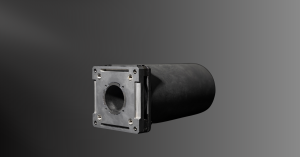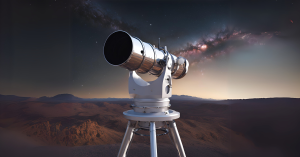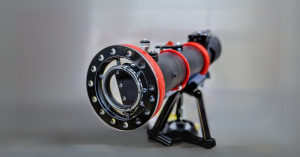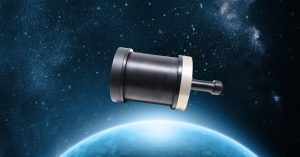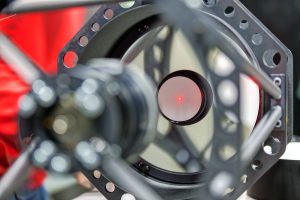RC Telescopes Systems for High-Precision Imaging
Avantier offers the latest in high-performance Ritchey-Chrétien telescopes with extensive use of aluminum and silicon carbide (SiC). These telescopes are inherently athermal and lightweight, ensuring consistent imaging performance while reducing launch costs. Custom solutions are available upon request.
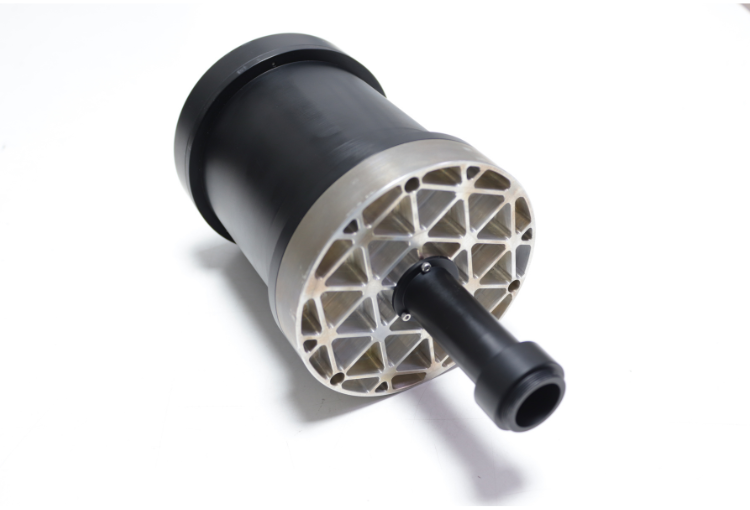
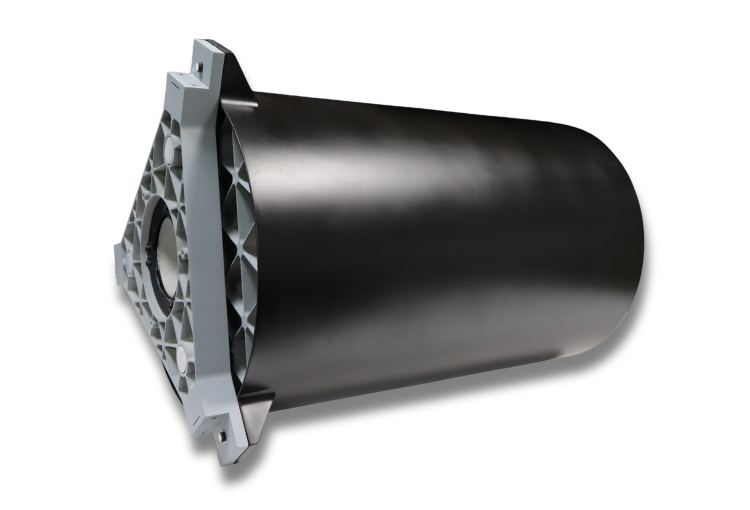
Ritchey-Chrétien Telescopes
The RC telescope is a specialized reflecting telescope within the Cassegrain optical system, featuring hyperbolic primary and secondary mirrors. This design effectively reduces optical errors like spherical aberration and coma, which are common in traditional reflecting telescopes. The Ritchey-Chrétien optical design enhances off-axis image quality and offers a wider field of view, although it does not fully eliminate field curvature and astigmatism. These telescopes are well-suited for astronomical observations, as demonstrated by their use in the Hubble Space Telescope. However, the precision required for aligning the optical axes of the primary and secondary mirrors, along with the complexity of manufacturing hyperbolic mirrors, makes Ritchey-Chrétien telescopes more challenging and costly to produce compared to other designs. Despite these challenges, they remain a popular choice for applications requiring high image quality over a wide field of view, such as in RC telescopes, due to their ability to eliminate chromatic aberrations and maintain image quality across varying focal lengths.
Manufacturing Capability
Type | Ritchey-Chrétien (Cassegrain Telescope) |
Material | Silicon carbide (SiC), Zerodur, ULE, and Aluminum, Primary and secondary mirrors coated with silver |
Dimensions | ∅110 x 210.5 mm |
Aperture Range | Consumer-Grade Systems: Ø100 mm – Ø200 mm, Research-Grade Systems: Up to Ø500 mm |
Focal Length and Focal Ratio | Focal Length: 760 mm – 1600 mm, F/# (Focal Ratio): F/5.6 – F/8 |
Interface | 1-32 UN, compatible with C-mount cameras, flange-to-image distance 17.5mm |
Spectral Coverage | Operating Wavelength Range: Visible to Near-Infrared (VIS–NIR) |
Total Weight of the Lens | 0.3 kg |
We offer aluminum and SiC materials for primary mirrors, secondary mirrors, and optical metering structures, providing flexibility in launch orientations. Designed for simplicity and economy, the all-ceramic construction outperforms typical refractive designs by providing broadband, thermally insensitive performance. The standardized architecture and generalized specifications define baseline performance, with custom designs tailored to mission requirements.
Customized Ritchey-Chrétien Telescope Solutions with a Trusted Manufacturer
At the heart of every successful satellite telescope project is a clear understanding of the customer’s performance goals, schedule, and budget. Avantier begins by offering tailored preliminary solutions drawn from an extensive library of proven designs and baseline telescope products. Through close collaboration with customers’ systems engineers, including sensor selection and spacecraft interface integration, we develop effective final designs that precisely meet mission requirements.
Choosing the right Ritchey-Chrétien telescope manufacturer is essential to realizing the full potential of these advanced optical systems. A trusted partner combines expert craftsmanship, precision engineering, and rigorous quality control to deliver instruments that meet the highest standards. Beyond superior optics, working with a reliable manufacturer ensures access to responsive support and customization options tailored to your unique needs—whether for scientific research, educational programs, or advanced astrophotography.
By partnering with Avantier, you invest in durable, high-performance RC telescopes designed to inspire and support your astronomical endeavors for years to come.
FAQ:
What makes RC telescopes better than other types?
RC telescopes are especially valued for their optical performance, particularly in high-resolution imaging. What sets them apart:
- Coma-free field: Unlike traditional reflectors, RC telescopes correct for coma, meaning stars at the edge of the field remain sharp—not stretched or distorted.
- Minimal optical aberrations: While not perfect, RCs significantly reduce spherical aberration and coma compared to simpler reflector designs.
- Large flat imaging field: Ideal for cameras and sensors; they don’t require complex corrector lenses to maintain flatness across a wide field.
- Open tube design: Reduces dew buildup and allows faster thermal stabilization compared to closed systems like SCTs.
These features make RCs highly favored for professional and scientific work where image clarity across the whole field is critical.
Is a Ritchey-Chrétien telescope good for astrophotography?
Yes—RC telescopes are excellent for astrophotography. They are commonly used in professional observatories and high-end amateur imaging because:- The coma-free and nearly flat field suits large CCD/CMOS sensors.
- No front corrector plate (unlike SCTs), which minimizes light loss and dew issues.
- Stable optical performance, even over long exposures.
What are Ritchey-Chrétien telescopes used for?
- Professional astronomy: Many famous observatories (e.g., Hubble Space Telescope) use RC designs.
- Astrophotography: Especially deep-sky imaging with large sensors.
- Research applications: Photometry, spectroscopy, and long-term monitoring of stars or galaxies.
- High-end amateur observing: For those seeking premium optical quality.
What is the difference between a Ritchey-Chrétien and a Schmidt-Cassegrain telescope?
- RCs are tailored for serious astrophotography, while SCTs offer a more compact and versatile option for general use.
Feature | Ritchey-Chrétien (RC) | Schmidt-Cassegrain (SCT) |
Optics | Hyperbolic primary & secondary | Spherical mirrors + corrector plate |
Corrector plate | None | Yes (Schmidt corrector at the front) |
Field of view | Wider, flatter | Curved, narrower without correctors |
Coma | Corrected | Present unless corrected with additional optics |
Astrophotography | Excellent for imaging | Good with field flatteners |
Ease of use | More complex to collimate | Easier for beginners |
Cost | Higher | More affordable, especially for beginners |
Why Choose RC Telescopes?
Ritchey-Chrétien telescopes stand out as the premier choice for astronomers and astrophotographers who demand the highest optical quality and precision. Their advanced optical design eliminates common distortions like coma and spherical aberration, delivering razor-sharp stars across a wide, flat field of view. This makes RC telescopes ideal for capturing stunning deep-sky images with large sensors, where edge-to-edge clarity is essential. Additionally, the open-tube design promotes faster cooling and reduces dew buildup, helping to maintain stable and crisp images during long observation or exposure sessions. While they require careful collimation and come at a higher price point than many beginner scopes, the superior performance and durability of RC telescopes make them an investment that serious users won’t regret. Whether you’re conducting professional research or dedicated to high-end astrophotography, an RC telescope offers unmatched optical excellence.WE CAN HELP YOU!
Contact us NOW for sales & expert advice.


